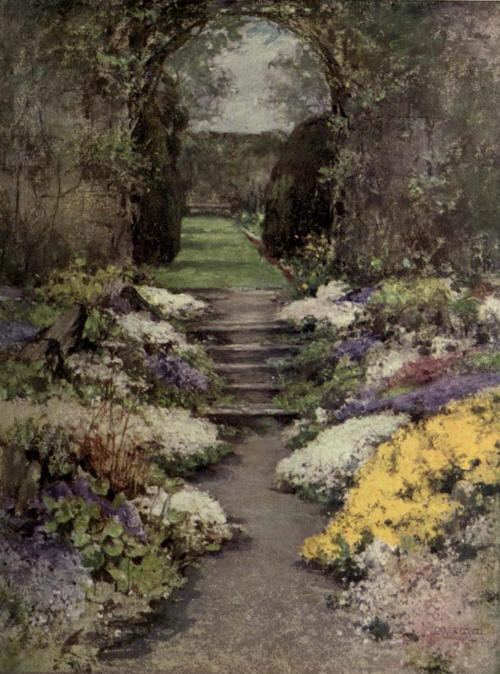|
 ABERTON
is a typical example of the kind of country residence erected in the
eighteenth century by professional men whose business lay in the
metropolis at a time when all classes in Scotland were beginning to feel
the beneficial effects of the legislative union between the richer and
the poorer realm. Whether that be the origin of this pretty demesne or
not, I know not for certain, having had access to no records of the past
of Baberton; but the house, viewed from outside, appears to be of the
date indicated, with some pleasing architectural features characterising
that period. Since its foundation, Edinburgh has spread far beyond her
pristine limits, and the district has become thoroughly suburban; but
the owners of Baberton have managed to keep their neighbours at ample
distance; only a golf course impinges upon the south side of their
demesne, which remains a silvan oasis in the surrounding labyrinth of
villadom. ABERTON
is a typical example of the kind of country residence erected in the
eighteenth century by professional men whose business lay in the
metropolis at a time when all classes in Scotland were beginning to feel
the beneficial effects of the legislative union between the richer and
the poorer realm. Whether that be the origin of this pretty demesne or
not, I know not for certain, having had access to no records of the past
of Baberton; but the house, viewed from outside, appears to be of the
date indicated, with some pleasing architectural features characterising
that period. Since its foundation, Edinburgh has spread far beyond her
pristine limits, and the district has become thoroughly suburban; but
the owners of Baberton have managed to keep their neighbours at ample
distance; only a golf course impinges upon the south side of their
demesne, which remains a silvan oasis in the surrounding labyrinth of
villadom.
The garden lies within
walls in the fold of a shallow glen, forming two wings divided by a
central wall. The northernmost wing, sloping fairly to the south, is
just a herb garden in the old Scottish manner, with aged apple trees,
grass alleys and borders well filled with summer flowers.

In the southern wing, the
buttresses of the outer wall supply a pretty feature, of which advantage
has been taken to establish thereon stonecrop and saxifrage. From this a
steep rustic path descends into the hollow, which Miss Wilson has
depicted in its vernal brightness, with a glimpse of the more formal
garden beyond. There is also some well-constructed rock-work on the
steep bank, whereon a small collection of alpine plants are thriving
satisfactorily. The whole enclosure appears not to exceed an acre in
extent, but careful cultivation and discriminating care have rendered it
far more beautiful and interesting than many more ambitious and
extensive gardens. |

